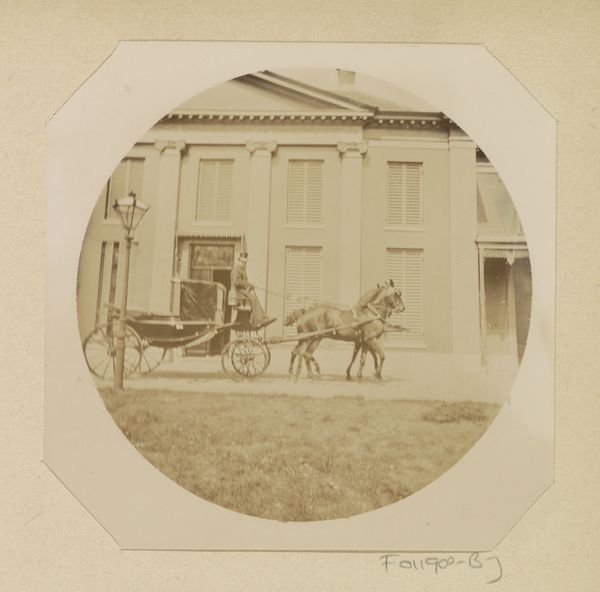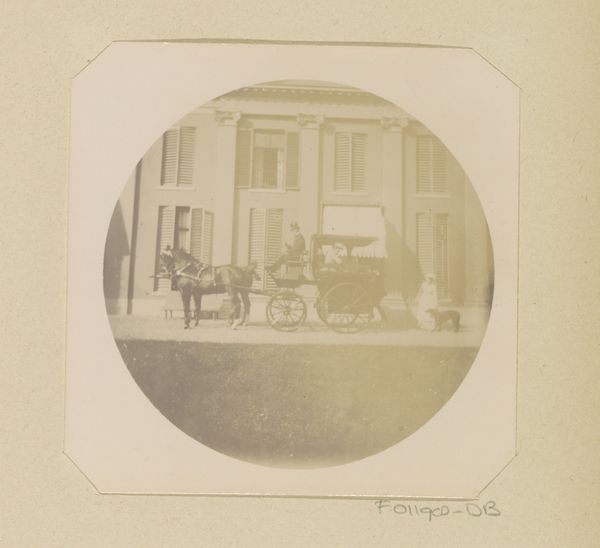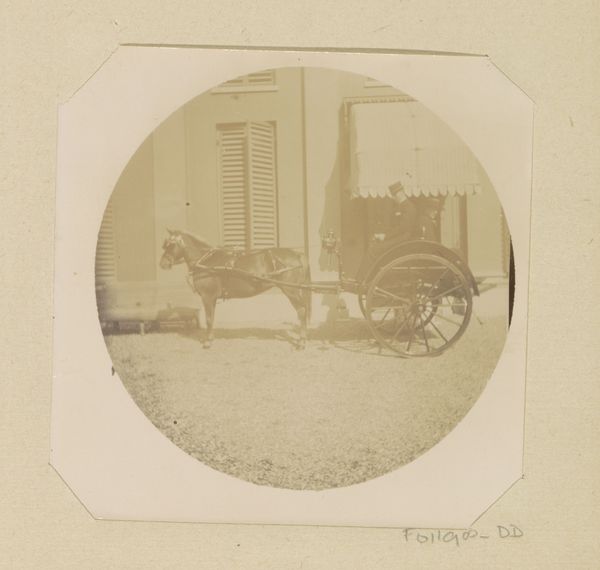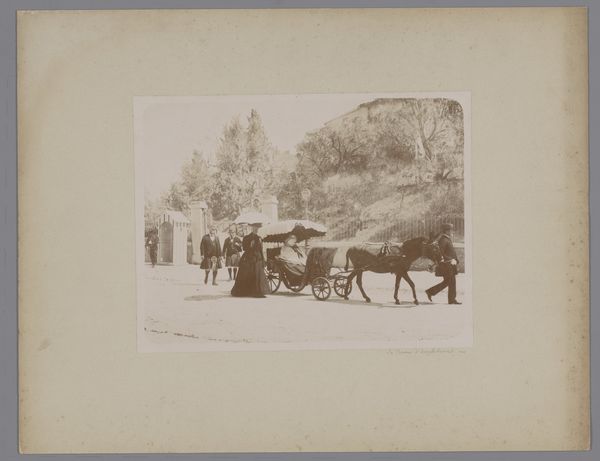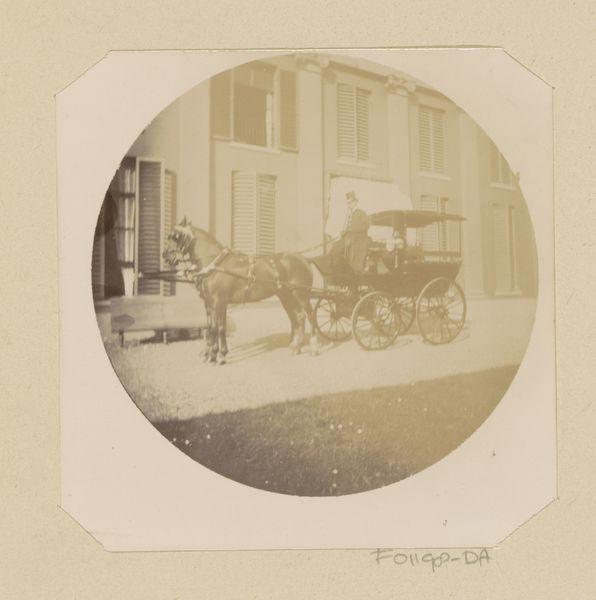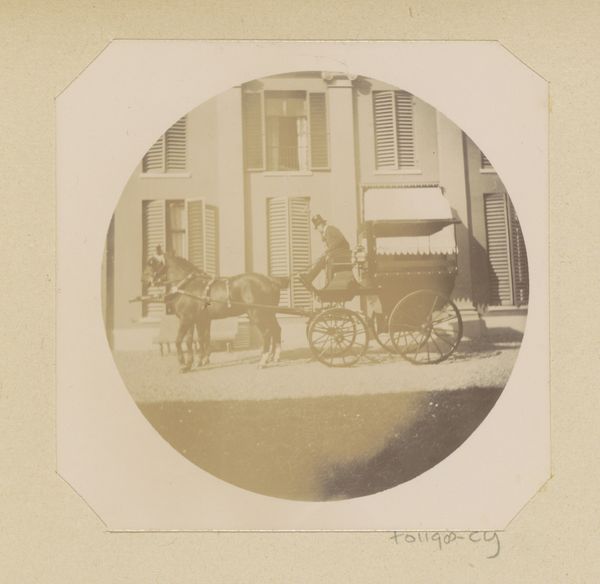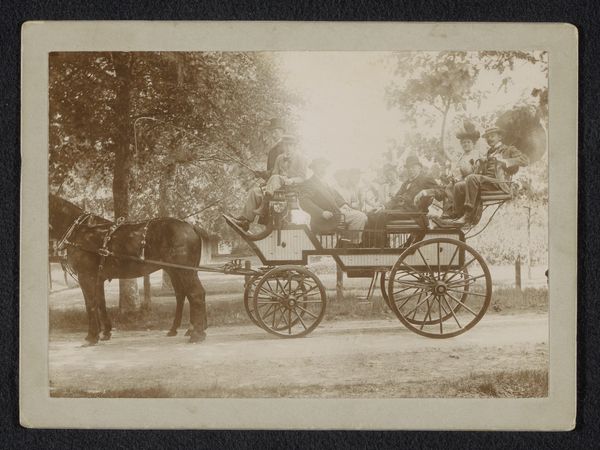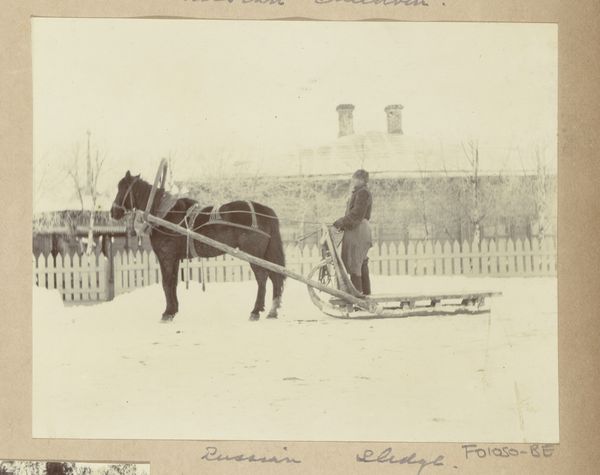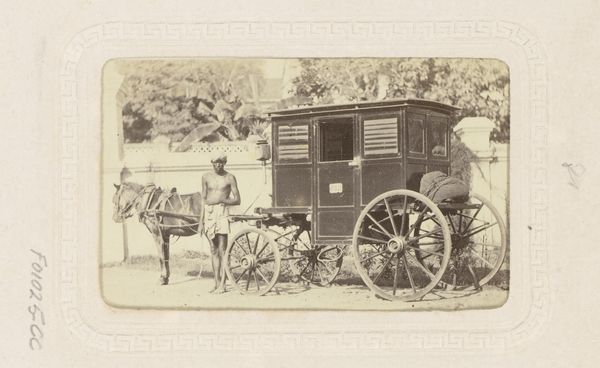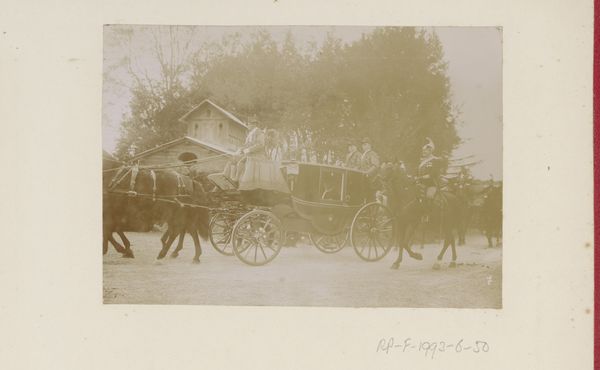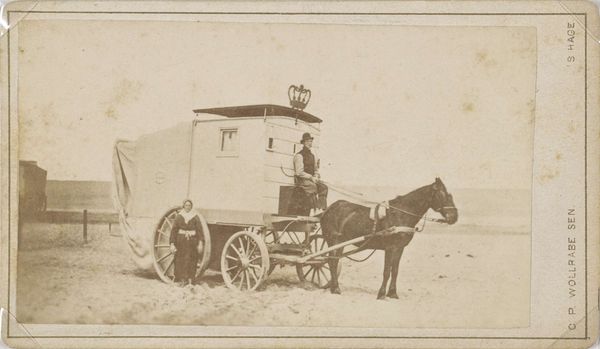
Rijtuig wachtend voor een huis, mogelijk Groot Warnsborn nabij Arnhem 1889 - 1893
0:00
0:00
photography
#
portrait
#
photography
#
genre-painting
Dimensions: height 99 mm, width 98 mm
Copyright: Rijks Museum: Open Domain
Curator: This photograph by Johanna Margaretha Piek, taken sometime between 1889 and 1893, is titled "Rijtuig wachtend voor een huis, mogelijk Groot Warnsborn nabij Arnhem", which translates to "Carriage waiting in front of a house, possibly Groot Warnsborn near Arnhem". Editor: It has this very still, quiet mood. Almost staged. The way the figures are posed feels deliberately composed, like a glimpse into a world carefully constructed. Curator: Genre paintings in photography at that time were heavily influenced by prevailing social and economic changes and reflected the upper-class lifestyle. Piek's choice to capture such scenes speaks to the rise of social documentation through the photographic medium. Editor: I agree, and you immediately see the division by class, but also by gender. You have the driver and the horse connected to movement and travel outside. Juxtapose this with the lady figure confined to the window. What's the significance of framing her like that, and in what way does the architecture support or hinder it? Curator: The architecture seems to frame her in a more confined interior sphere of the household, indicating the traditional role of women confined to their domestic role in that period. And although genre is associated with a sense of truth and veracity, that framing can imply surveillance and controlled environments. Editor: Precisely. The photographic process itself could be considered a reflection of that controlled environment—capturing and freezing a specific moment, influencing how it is received. Look how her position is at the literal peak, which also means a type of observation. Curator: But do you believe it provides any social mobility, providing that she is aware and willing to the possibilities and new technological means of photography? Editor: It depends on who controls the means of representation, Johanna Margaretha Piek's view of things would differ from a male author. I mean who holds the power in dictating the subject's gaze? Is it a way to affirm privilege, or could it serve as an awareness campaign for some form of subtle change in position? Curator: A well-structured point of view. Viewing this image as part of the rise in documenting social standings certainly changes one’s interpretation. Editor: Exactly, by analyzing it through the lenses of class, gender and power we can see how photographs in that era mirrored—and sometimes challenged—the social conventions of the time.
Comments
No comments
Be the first to comment and join the conversation on the ultimate creative platform.
